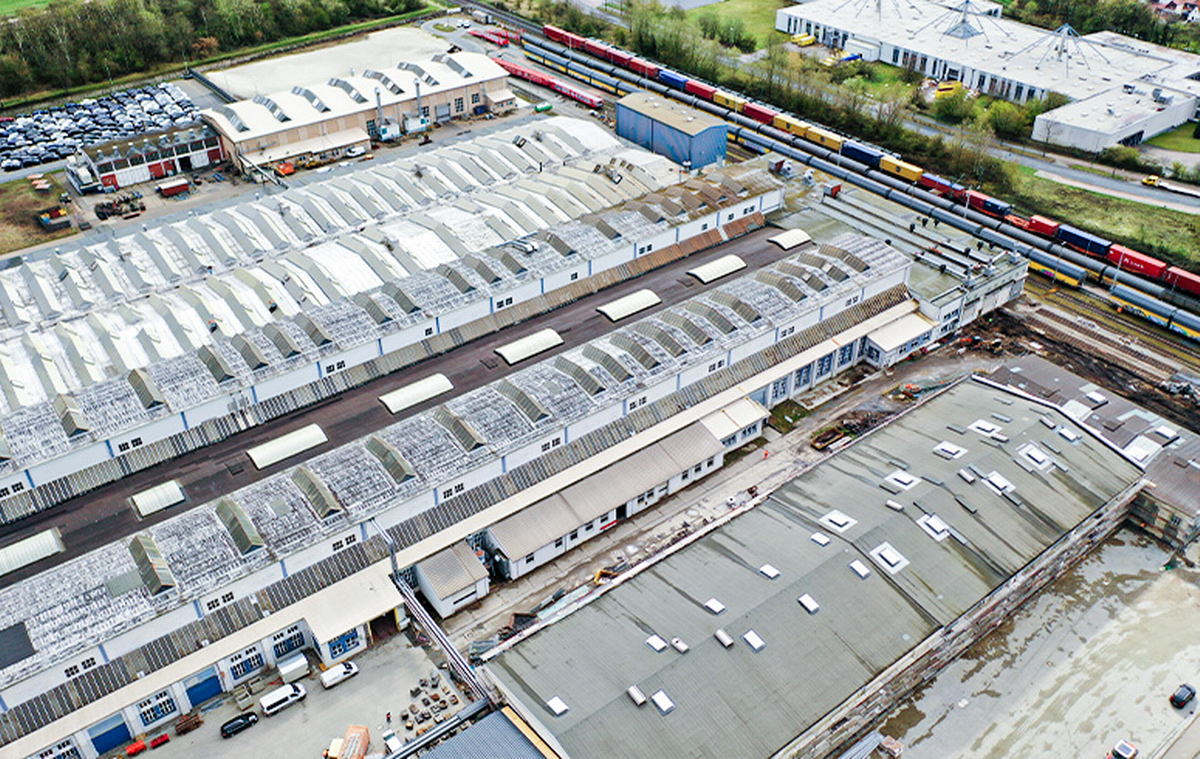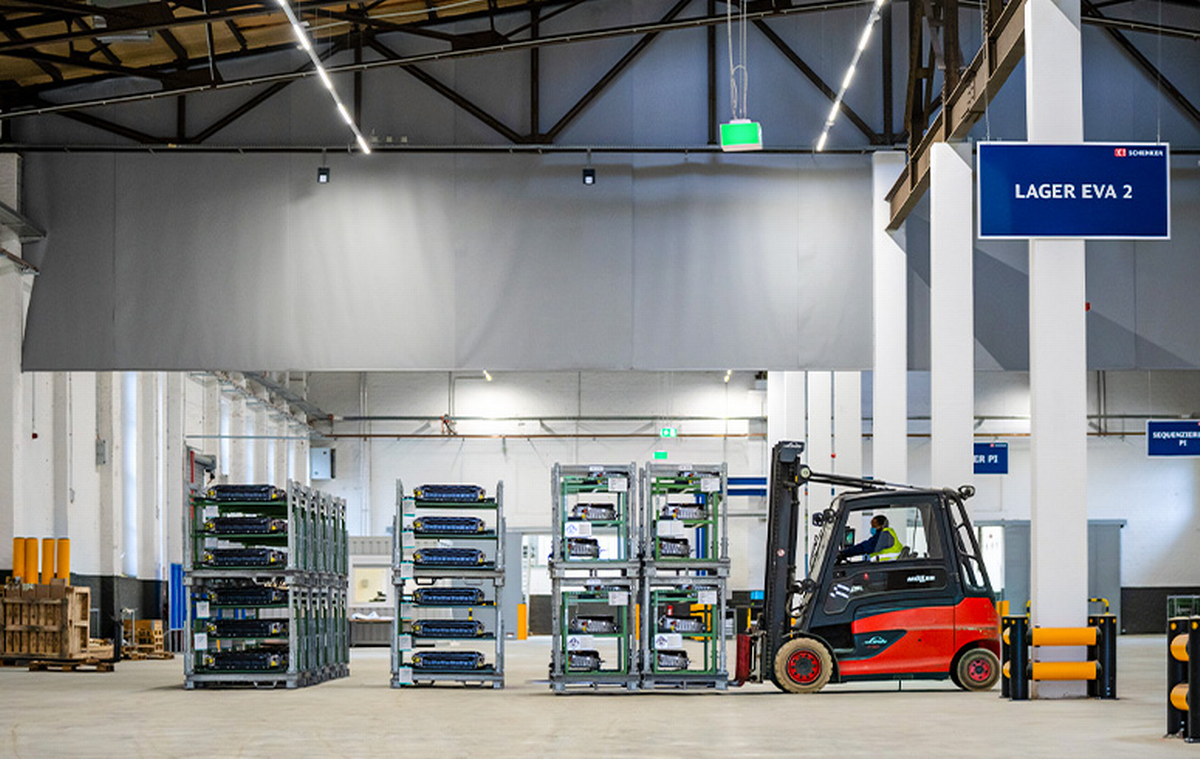Battery logistics: Why batteries belong on trains
Demand for electric vehicles has been steadily taking off for years, and the demand for batteries has risen right along with it. Now all the big-name manufacturers are devising hybrid models or fully electric vehicles. The batteries to power them typically come from suppliers abroad, and going forward, they will increasingly come from Germany as well. Alongside seasoned manufacturers now jumping into the battery production market, new players are increasingly stepping into the fray, including some first-time suppliers. This generates enormous flows of cargo that have to be tackled in an environmentally friendly way. Given how large and heavy the batteries are, the only environmentally sound option for managing them is rail. For example, battery systems for the Volkswagen ID.4 weigh in at some 500 kilograms, so packing them onto lorries is hardly in the cards. Just one freight train can haul as many batteries as 52 lorries – without emitting an ounce of CO2! What's more, the fully assembled battery modules are dangerous goods subject to special transport conditions.
Automotive RailNet: rail’s big advantages
"We're not the only ones who can do it, of course. But we are the ones with the highest-performing network", says Kai Birnstein, Head of Automotive at DB Cargo Logistics, referring to the European Automotive RailNet. In this dense network, DB Cargo Logistics transports raw materials to the suppliers. Then it brings vehicle parts from suppliers to manufacturers and finished vehicles to dealers and seaports. Time-critical transports for intermediate plants, suppliers and spare parts and innovative finished vehicle transports for all well-known automobile manufacturers are handled here, throughout Europe and all the way to Russia and China. Even now, the network already transports some 250 trains every day. "We are now points for battery manufacturers to access this network." We've embedded batteries into comprehensive logistics services, linking the logistics chains of suppliers with those of manufacturers. We deliver just-in-sequence from raw materials to finished batteries. We therefore ultimately guarantee that production takes place from batteries to finished vehicles," explains Kai Birnstein. "In this area, anything lorries can do, we can do greener!"

The Automotive Logistics Centres (ALCs) in Bremen. Copyright: Oliver Lang
It is easy for the big automakers to integrate rail, since many of them have had their own private sidings for decades. Even so, lots of battery manufacturers and cell suppliers lack their own tracks, so they reach the rail system through multimodal transport, working through logistics centres, rail ports and terminals that are sometimes already in place. Even today, sites in Germany are being linked to Poland, the Czech Republic and Hungary. These battery transports alone replace up to 35,000 lorries a year with rail. If need be, we will keep expanding existing infrastructure and invest in our own Battery Logistics Centres (BLCs) or in comprehensive Automotive Logistics Centres (ALCs) at various sites, for instance, in Bremen.
Here's how comprehensive logistics processes work
It sounds simple at first blush, but there's actually much more to it than merely setting up transhipment points for batteries so suppliers can get their transport flows onto the rails. Setting up network access points for battery manufacturers, including options for loading cargo in wagons and in combined transport with the requisite buffer and picking areas and the necessary safety facilities, calls for creative solutions and all the expertise of DB Cargo Logistics. "There are also solutions for the unavoidable trip from the plant to the rail", says Kai Birnstein. "They allow us to handle the first mile from the plant with our own lorries. We intend to rely on electric trucks going forward, so we can reach vehicle manufacturers with a green supply chain."

The batteries are loaded in the ALC in the correct order for later assembly. Copyright: Oliver Lang
Complex battery logistics in Bremen
DB Cargo Logistics has also already established appropriate concepts for delivering batteries to the production line. The DB Cargo Logistics' Automotive Logistics Centre (ALC) in Bremen has been up and running since January 2021. Here, the batteries are delivered by lorry, and in future they'll be brought directly by rail. In the battery hall, the sensitive components are then loaded from the 3-piece racks used for delivery onto 1-piece racks with the aid of a separating device. Next, they are placed in the correct order for later assembly. After sequencing, the battery modules are loaded onto trailers. Electric tractors drive them to the nearby automotive plant, where they are immediately installed. Timely delivery in the correct sequence ensures seamless assembly at the automotive plant. It also reduces the amount of storage space needed and cuts the logistics costs for customers. "In addition, being close to the plant lowers the risk of delays and missed deliveries," adds Birte Dehne, ALC Project Manager at DB Cargo Logistics.